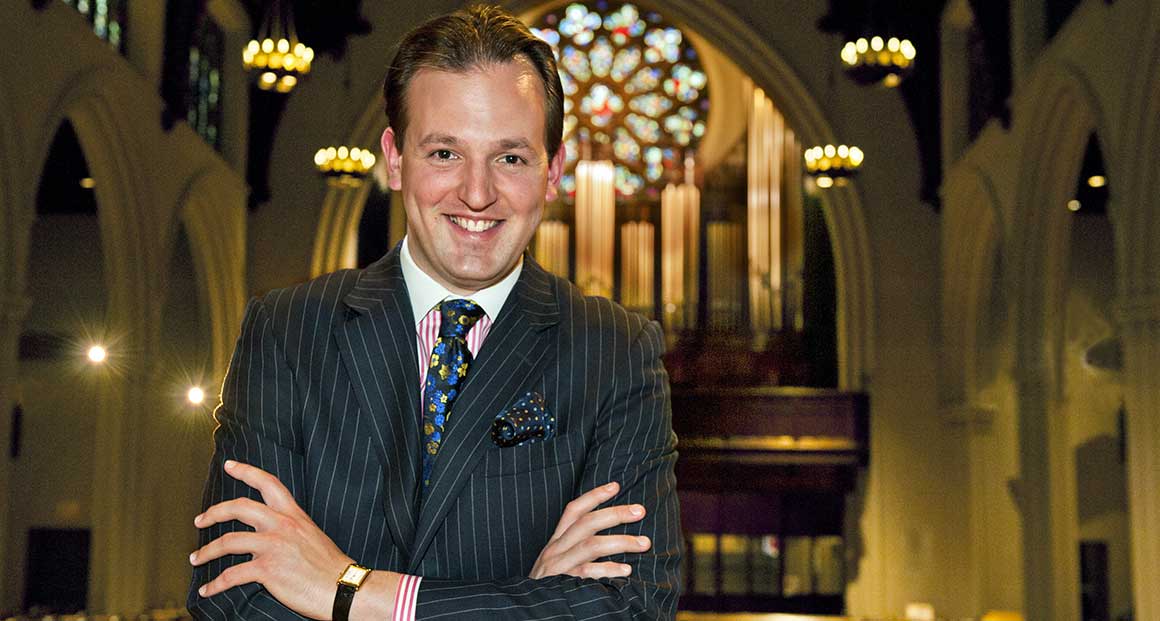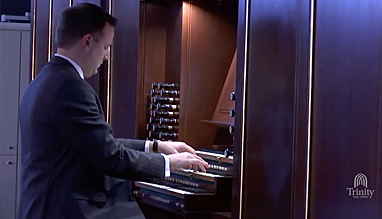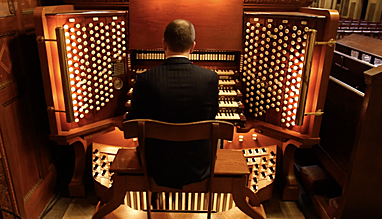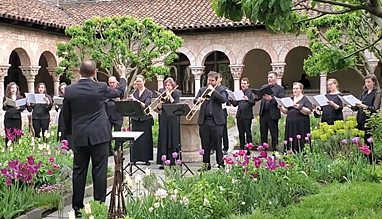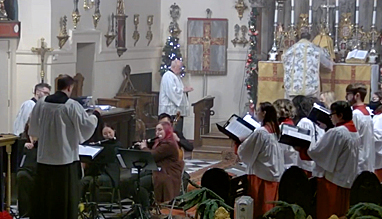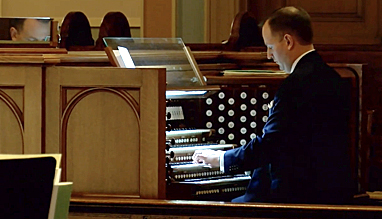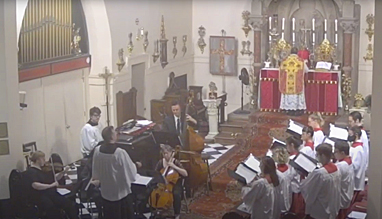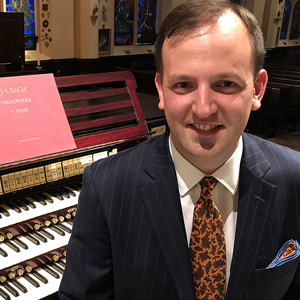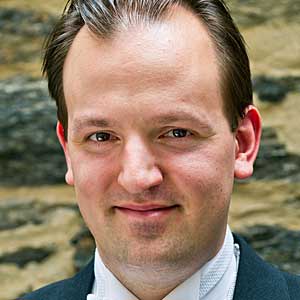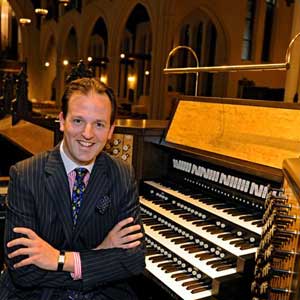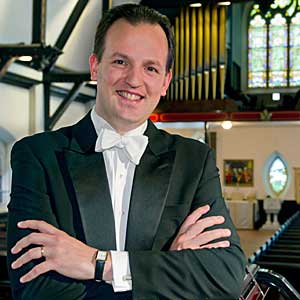BNN-Karlsruhe, July 2019
“The special sonority of the Lenter organ … Enlow demonstrated with Sigfrid Karg-Elert’s “Harmonies du soir”, and almost a chamber orchestra with its tonal variety passed before the mind's eye..” (…) The concert finale, however, consisted of a prelude improvised by Enlow with a fugue in the late Romantic style on the Steinmeyer organ, including the song "Wachet auf, ruft uns die Stimme"; The fugue, which was equally successful and original, reaped rich applause after its jubilant conclusion.
............................................................
Opera News, November 2017
By Joshua Rosenblum
“Organist David Enlow gave a heroic performance of the difficult solo part. Enlow’s technical precision, combined with the room’s marvelous acoustics, allowed one to hear a lot of detailed passagework that is inaudible on many recordings. In addition, he provided a widely varied assortment of colors and sonorities—a tribute to the composer’s indications, the versatility of the instrument (the N. P. Mander Organ), and Enlow’s own skillful registrations. The result was thoroughly orchestral, including some truly electrifying moments.”
............................................................
Choir and Organ, January-February 2016
by Michael Quinn
“There’s something delightfully dreamy about this David Enlow recital of works originally composed for piano. The III/49 Opus 665 Casavant organ of New York’s Church of the Resurrection (built in 1916 and ‘re-purposed’ by the Organ Clearing House in 2009) is a gorgeous, light-textured, nuanced instrument that treats Debussy’s Verlaine-inspired Petite suite to gossamer-delicate lyricism and the second Arabesque with enchanting playfulness. Grieg’s Holberg Suite benefits from the use of the organ’s more full-bodied reed colours throughout, with the original piano figuration in the ‘Prelude’ creating a rush of fleet-footed chords. The Six Canonic Studies for Pedal-Piano by Schumann ebb and flow between symphonic scale and chamber intimacy, Enlow delivering nimble accounts full of singing detail.”
............................................................
Recital, Karlsruhe, Germany 2015
BNN Karlsruhe, August 2015 by Jens Wehn, translated by Michael König
In the third concert of the International Organ Summer, organist David Enlow filled both instruments with life. With his boisterously moving transcription of Claude Debussy's "Petite Suite", enthusiastically received by the audience, David Enlow bade farewell to his listeners, who didn't let him leave the organ bench without an encore.”
............................................................
Review of Pater Seraphicus
from The American Organist, October 2013 by James Hildreth
“Enlow’s performance style is often improvisatory, capturing in a unique way the manner in which Franck himself may have performed. Enlow demonstrates a keen sensitivity to line and phrase, employing copious amounts of rhythmic nuance, … highlighting or underlining phrase structures.”
“While Enlow plays with a sense of freedom, his tempos are strong and compelling, whether expansive, lingering, poetic, or energetic, driving, agitato. The loving tenderness he imparts to the central melodies of the Choral in A Minor and Grand Pièce Symphonique, or the impetuous drive of the “storm” section of the Pastorale or the main theme of the Choral in A Minor are but a few of the myriad examples of Enlow’s arresting performances.”
“Enlow has successfully and brilliantly achieved his goals here. One can easily find excellent recordings of the Franck works … However, this remains an outstanding choice among the plethora of recordings of Franck’s organ music.”
............................................................
from l’Orgue Francophone (Journal of Federation Francophone des Amis de l’Orgue)
Pater Seraphicus, the major organ works of Franck by David Enlow at the organ of St Mary the Virgin, Times Square, New York City. [Pro Organo CD 7247 ; 3 CD] At first hearing, the entry of the reeds is surprising, or even confusing, as their character is very different to that which our ears are accustomed to. We must over-ride that, and put aside our Franck-ist and Symphonic atavism. David Enlow truly has much to say in the works of Franck, which he has perfectly comprehended and which he renders with personal expression while remaining faithful to the spirit of Franck. This approach is well suited to American organs, especially the Church of St Mary the Virgin in New York (Aeolian-Skinner Op. 891, 1932, revised and augmented from 1988-2002 by Mann & Trupiano) is a gem.
............................................................
from l'Orgue, Décembre 2012
by Georges Cattin, Translation: Monique Dori
…the interpreter of this Franck set is David Enlow, graduate of the best American schools. He is a pure example of what the U.S. can offer, for an organist, at its best: perfect technique, inventive, flexible, vigorous musicality, free of conventions of registration that often make Franck's music so boring on the Old Continent.
In short, we have here all the ingredients of a lively rendering neither too fast nor too powerful, with magnificent reed colors, a sense of phrasing of extraordinary good taste and a subtle and effective rubato. Compared with the two very beautiful sets of Franck works mentioned above, we are here in a state of total surprise at a happy encounter with a joyfully revitalized "Pater Seraphicus".
............................................................
from Mixtures, la Fédération Québécoise des Amis de l'Orgue, Nov 2012
by Robert Poliquin
"Without a doubt, the artist has a flawless technique. His reading of the different works is remarkable, and is reflected in his playing."
............................................................
Review of an RCCO Convention Solo Recital
from Organ Canada, September 2014 by Gilles Leclerc
“Sometimes things are lost in any transcription from one medium to another. Other times such undertakings are so well done, … that one can rediscover a work’s sheer beauty. Enlow’s transcription of this [Holberg] Suite was just such a delight, and most striking about his performance were the innumerable shadings he displayed with his most effective registrations.”
“David Enlow’s minute attention to nuances, shaping of phrases, tempos, and overall forward motion, not to mention the perfect registrations, made this the most poetic rendering of [Franck’s Grande Pièce Symphonique] I ever heard.”
“David Enlow understands the music he performs, respects its narrative but manages to delve further into the score with his incredible sense of expressiveness and sense of musical form.”
............................................................
David Enlow in recital, at Orgelsommer festival in the Collegiate Church – Translation: Ethan Fran
from Stuttgarter Zeitung, August 2012 by Markus Dippold
Give an audience an impressive finale, and their roaring approval is guaranteed. This assertion was proven by David Enlow at the Collegiate Church. The Canadian organist literally pulled out all the stops, including [the zimbelstern], in Henri Mulet's Carillon-Sortie, a performer's delight which attested to Mr. Enlow's enormous virtuosity. Virtuosity marked the program from the outset in Bach's Toccata and Fugue in F major. Enlow shaped the monumental Toccata into a multi-hued showpiece complete with lively pedal-work which contrasted with the gravitas of the fugue (...).
Even more striking than his technical brilliance are the Canadian's imaginative and rapid registration changes, which make him an artist of interest. The whirring dance of Louis Vierne's “Naïades,” glimmering from within the closed Swell box, played a delightful contrast to Mozart's Fantasie in f minor. This play of alternating styles and sound effects is a major element of Enlow's interpretations. This applies on the one hand to the dramaturgy of his programming, which alternates symphonic-romantic pieces with simpler compositions. On the other hand it also applies to each separate work, within which Enlow searches out the most varied colorations possible, exploiting the full resources of the Collegiate Church organ. Such is his treatment of the Mozart Fantasie, particularly of its dynamic effects, in which he transfers the principles of Mozart's symphonic orchestrations onto this organ work.
